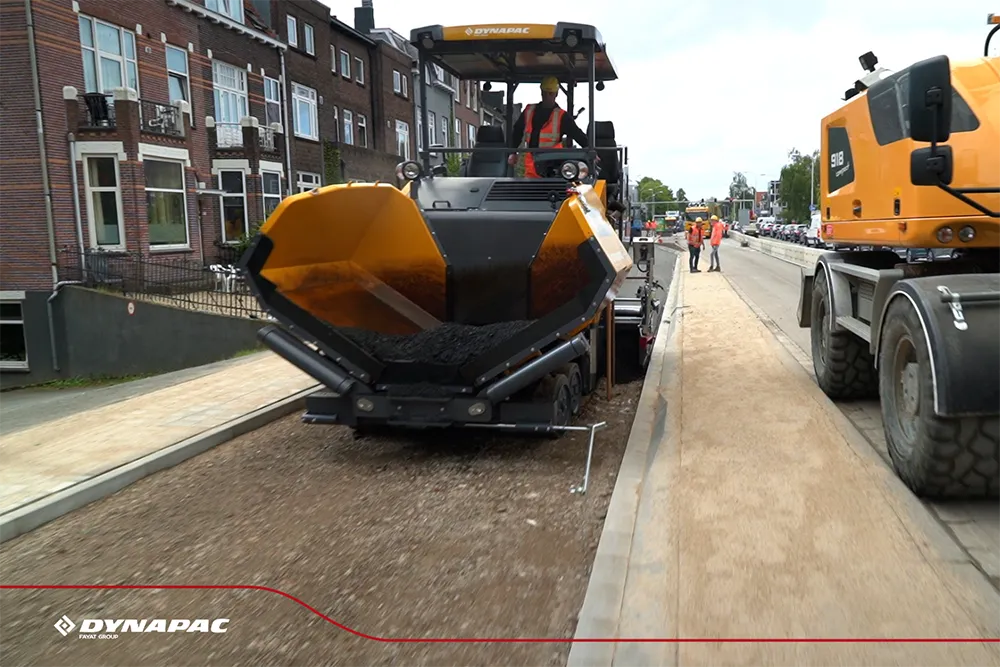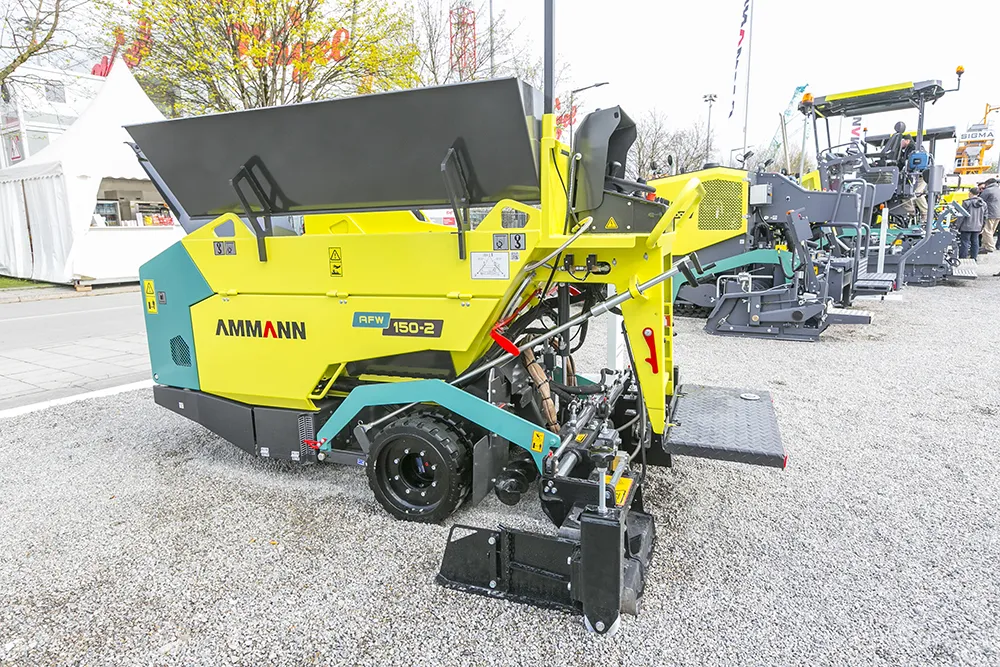
Customer goal to be CO₂ neutral
Traditional construction company Van Gelder is the full-service infrastructure partner for the Netherlands with over 1,100 dedicated employees and more than 100 years of experience. Van Gelder's objective is to contribute to a smart, sustainable and safe public space of the future and to become emission-free from 2025 onwards. To achieve this, Van Gelder invested in an electric paver and an electric tandem vibratory roller, both Dynapac innovations.
First real-world jobsite
The moment of truth arrives as the electric city paver SD1800W e is put sent to an actual construction site. The machine's charging and performance capabilities are scrutinised under real-world conditions. The electric city paver's ability to handle charging speeds of up to 80kW is put to the test, showcasing its potential for quick and efficient recharging. It is clear that Dynapac's team has not only engineered a revolutionary machine but has also considered the practicalities of its operation on construction sites.
Throughout the day, the electric city paver's capabilities are on full display. It navigates the challenges of the construction site, showcasing its power and precision. However, as with any groundbreaking innovation, there are moments of uncertainty and unexpected hiccups. A miscommunication between the machine and the charger momentarily halts the charging process. Yet, the dedicated team quickly diagnoses and resolves the issue, highlighting their commitment to ensuring the machine's seamless operation.
Despite these challenges, the electric city paver triumphs, completing the day's tasks and paving the way for a greener and more sustainable construction industry. As the paving comes to an end, the battery charge still holds strong, demonstrating the machine's impressive endurance. The success of this test run reinforces the electric city paver's potential to transform construction practices worldwide.
Reflecting on the day's accomplishments, the customer Van Gelder and the Dynapac team express their pride and satisfaction. The electric city paver has exceeded expectations, showcasing its performance capabilities and environmental benefits. The journey from concept to reality has been arduous, but the end result is a testament to the power of innovation and determination.
Performance, Sustainability in Harmony
The SD1800W e doesn't compromise on performance to achieve sustainability. With a paving capacity of up to 350tonnes/hr and the ability to pave up to 4.1m with the extended screed, it meets the demands of modern construction projects. A key feature is the smart preheating capability, which allows the screed to be preheated while connected to an external power source. This ensures optimal performance while conserving the machine's battery life for extended paving operations.
The Way to a Greener Tomorrow
As cities around the world strive for emission-free urban landscapes, the Dynapac SD1800W e is more than a machine; it is a symbol of the construction industry's commitment to sustainability and environmental stewardship. By embracing cutting-edge technology and innovative design, Dynapac has created a powerful, efficient and environmentally friendly solution.
Content produced association with Dynapac









